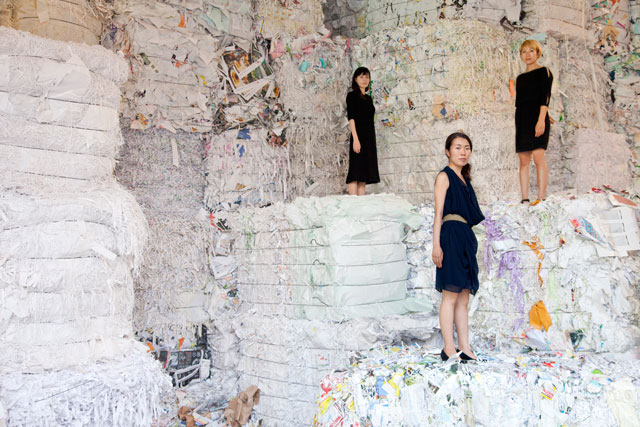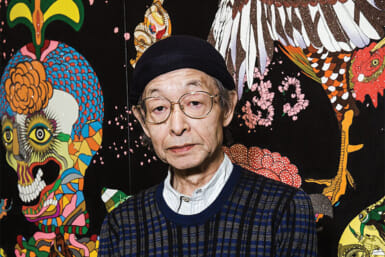Humans are strange creatures. We crave novelty and stimulation, yet we also seek comfort. We want new things, but when new things turn old, we throw them away, thinking ourselves masters of our own lives, reborn through novelty and commerce. The world at large reminds us of our powerlessness, forcing us to face our own mortality, and still we find reason to celebrate.
By Sarah Custen
The Rite of Spring comes to us in this incarnation as a meditation on the 2011 earthquake, an attempt to understand our relationship to rubbish, and a celebration of life. This work combines the minds and efforts of three young artists: Momoko Shiraga, Yuko Mohri and Yasuno Miyauchi. It combines Stravinsky’s original score for The Rite of Spring with new choreography (Shiraga), organic and distorted soundscapes (Miyauchi) and a futuristic, recycled landfill environment (Mohri). Despite following in the infamously avant garde footsteps of composer Igor Stravinsky and choreographer Vaslav Nijinsky (whose 1913 premiere nearly caused a riot), Shiraga, Miyauchi and Mori’s The Rite of Spring retains enough of the now-familiar Stravinsky original, while weaving in everyday jokes and natural, innocent movements and sounds to delight, amuse and astonish.
“Putting aside the issue of it being a controversial work in the past, I wanted to focus on making a piece of entertainment,” said Shiraga. “Actually, if you look at Stravinsky in the same way, that’s what he was trying to do. So I wanted to make something that was interesting and fun for audiences, and to try something new.”
Shiraga, leader of Momonga Complex, imagined the show as a sort of matsuri, but the collaboration with Mohri and Miyauchi brings a new depth and several unexpected dimensions. Mohri—an installation artist and head of MoreMore Tokyo (a fieldwork project that deals with the issue of water leaks in Tokyo Station)—brought her fascination with everyday objects, “junk” and machinery to the project, making costumes and props from PET bottles and toilet paper, and adding stage design to her resume. Miyauchi, the leader of tsumigine, brought her characteristic respiratory rhythms and primitive, pagan singing.
“Shiraga-san saw The Rite of Spring as happening in the near future of Japan,” said Mohri. “I wanted to use rubbish, and Miyau-san wanted to use the primitive voices.” Shiraga’s choreography utilizes all of this to incredible effect, creating a completely different world. “It was like I organized the new nature of Japan,” Mohri said. “And [Miyauchi] organized the new air of Japan. This is our vision.”
The effect is eclectic, and a bit uncomfortable to begin with, leaving the audience searching for some foothold, some connection. For my part, I was reminded of the Indians hushing each other in formation from Mary Martin’s Peter Pan, then Alice following the mome raths through a darkening forest, then the warm, mossy inhabitants of Fraggle Rock. Yet for my companion, the show brought forth flashes and reflections of Terayama Shuuji, the avant garde, multi-hyphenated 20th century Japanese artist.
And who can say that either of us is more correct in our interpretation? At its best, theater brings forth our inner unguarded psyches, like a dream playing itself back to us. The Rite of Spring does just this, with its precarious balance of intimacy and peculiarity. We see familiar flickers of our daily lives, blended into a technicolor dreamworld, recognizable only in fits and starts, while in between we float into an abyss of sound, color and movement, trusting that the artists will bring us back.
And they do. What was uncomfortable and out of place in the beginning becomes comforting and almost relieving, when echoed back to us at the end. Because we know it now, we recognize it. We are reborn to a new understanding of what The Rite of Spring can be.
“Originally the work had a very serious tone and a very serious image,” said Shiraga, “But ultimately what’s taking place is something very natural, something that happens all the time. I wanted to make it a very festive, festival-like experience.”
The Rite of Spring
Momoko Shiraga – Direction, Choreography
Yuko Mohri – Stage Design
Yasuno Miyauchi – Music
11/12–11/16, Tokyo Metropolitan Theater Playhouse
Image © Masumi Kawamura









